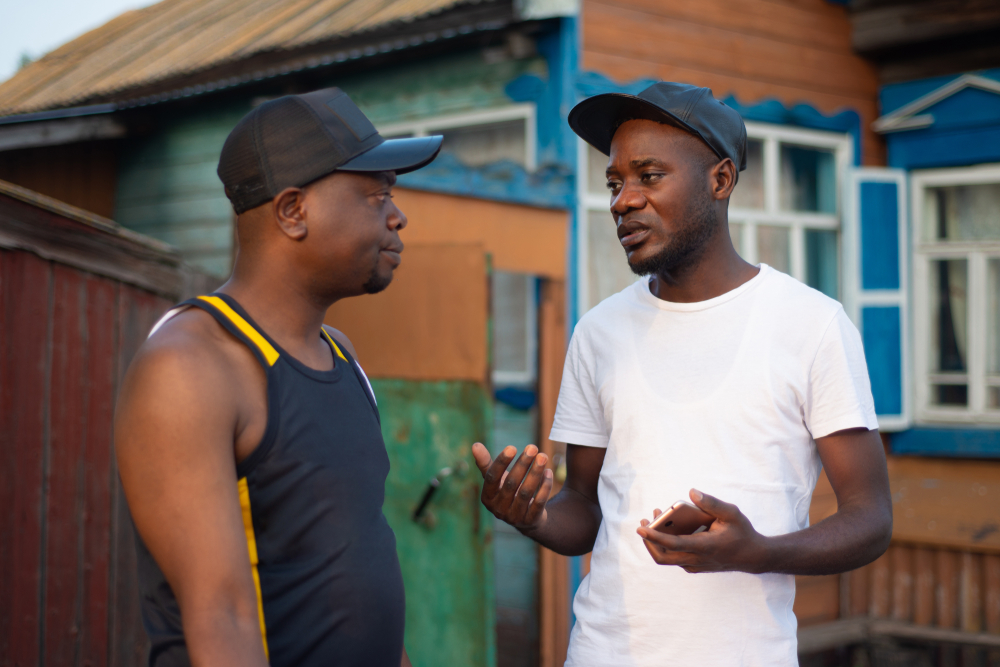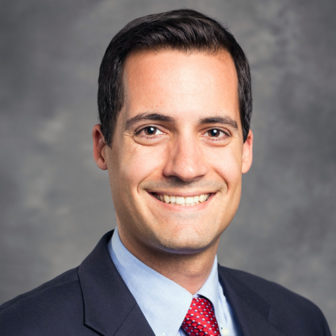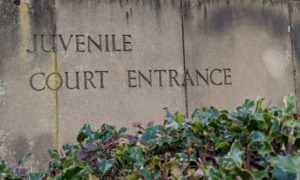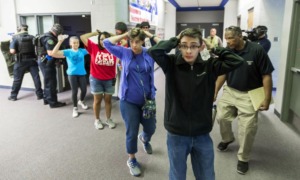
Vladimir Gappov/Shutterstock
.
In the midst of the ongoing pain and heartbreak of America’s gun violence epidemic, there are some incredible success stories from around the country that have profound policy implications.
With our collective focus on tragedy and dysfunction, we are missing the important story about what is actually working to reduce gun violence.
Did you know that Oakland, Calif., once considered one of the country’s most dangerous cities, has seen a remarkable 50% reduction in homicides and shootings since 2012?
And Oakland isn’t alone.

Mike McLively
Despite a national uptick in levels of gun violence in recent years, many individual cities are bucking the trend. From smaller communities, like New Haven, Conn. — where gun violence is down 80% — to large metropolises like New York City — where shootings hit an all-time low last year — local leaders are refusing to wait for a federal government that is paralyzed on this issue.
How are these cities getting the job done? Although each is different, there are some startling similarities across the board.
First, successful cities are following the data. This seems so simple, but in the gun violence debate, it gets missed again and again. Almost all our conversations and proposed solutions are tailored to address mass shootings, which represent less than 2% of overall gun violence. Unless we make an effort to truly understand violence dynamics and identify its primary drivers, we’ll never move the needle on this issue.
Leaders in Oakland started by throwing away old assumptions about the causes of violence and instead conducted a thorough problem analysis with the help of the California Partnership for Safe Communities, which showed that a very small number of individuals were driving the vast majority of the city’s serious violence. This was a crucial finding that completely reshaped the city’s response.
And it turns out this same basic pattern holds true in communities all over the country.
Work with high-risk people
Recent research makes clear that, on average, at least half of homicides and shootings in our cities are committed by a small subset of people known by law enforcement to be affiliated with “street groups” involved in cycles of retaliatory violence, and that these individuals constitute less than 0.6% of the average city’s population. Unlike with mass shootings, this type of violence is relatively predictable, which means it is more preventable.
Second, successful cities are focusing on providing intensive intervention services to high-risk individuals.
In Richmond, Calif., for example, where homicides and shootings have fallen by a staggering 67% since 2007, the city’s Office of Neighborhood Safety started a voluntary program, called the Peacemaker Fellowship, which works closely and exclusively with would-be shooters.
The Fellowship provides long-term access to intensive mentoring, goal mapping, mental health counseling, cognitive behavior therapy and vocational training, as well as travel opportunities and the support of a council of elders. Financial stipends are available for participants who remain in the program and meet established goals and benchmarks.
A recent evaluation found the Peacemaker Fellowship to be associated with 55% fewer shooting deaths and hospital visits in Richmond.
Similar programs, referred to generally as Street Outreach Work, are in place in cities around the country that are experiencing significant drops in gun violence, including Los Angeles; Oakland, Calif.; Chicago; Providence, R.I., (on track to have its lowest number of shootings in recent record), and New York City.
Yet, working with high-risk populations is not easy, and many cities don’t have the infrastructure to access and provide effective services to these individuals. This brings us to the third element of success.
Get the funding
Third, successful cities are leveraging public support, particularly state-level funding.
Take Massachusetts as an example. In 2010, in the face of rising levels of youth violence, the commonwealth created a grant program called the Safe and Successful Youth Initiative (SSYI) to support cities to provide wraparound services to “proven risk” individuals. The program requires cities to work with law enforcement to identify those at the highest risk of committing violence, and then with community-based organizations to actually engage with those individuals.
This helped the city of Lowell build up the capacity to serve its highest-risk population, with large corresponding drops in violence. Between 2013 and 2016, Lowell saw overall firearm-related activity drop by 22%, gang-related criminal activity decline by 31% and nonfatal shootings plummet by 61%.
Statewide, between 2010 and 2015, Massachusetts’ gun homicide rate fell by 35%, driven by the fact that gun homicide rates among young people ages 14–24 dropped by 45%. The target age for SSYI participants is 17-24.
In New York, the GIVE program provides funding for cities to implement evidence-based violence reduction strategies, including the city of Newburgh, where nonfatal shootings are down more than 80% and firearm-related violent crimes have fallen by more than 65% since 2014. Statewide, between 2010 and 2017, gun homicide rates in New York have fallen by a remarkable 41%.
However, these states are the exception rather than the rule. As we pointed out in a report, “Investing in Intervention,” only a small handful of states are investing in similar structures to support local, evidence-based violence reduction strategies. Too many cities are operating without state or federal support. This is a missed opportunity.
All of this taken together has important policy implications at the federal, state and local levels. Federally, we need to follow the data and get as serious about funding solutions to the gun violence epidemic as we are about the opioid epidemic.
While mass shootings dominate policy conversations about gun violence, the reality is that the vast majority of shootings are daily incidents that take place on our city streets, too often in underserved communities of color.
What states, cities can do
Intervening with high-risk individuals is a highly effective strategy for addressing this violence that has nothing to do with regulating guns or the Second Amendment. Yet federal funding, which was never adequate, has been slashed even further by the Trump administration.
Sen. Cory Booker recently introduced legislation that would appropriate $90 million per year for 10 years to help implement evidence-based violence reduction strategies in cities disproportionately impacted by gun violence, which would be a step in the right direction.
In addition, since many high-risk individuals are also the victims of violent crime themselves, we must leverage federal Victim of Crime Act (VOCA) dollars to scale up violence intervention programs. Recently, New Jersey and Virginia announced large VOCA grants to do exactly that. More states should follow suit.
States should also look to Massachusetts, New York and others that are investing significant resources in programs to support the implementation and expansion of local, evidence-based violence reduction strategies, with an emphasis on providing services to those at highest risk.
Finally, at the local level, city leaders can start by studying what’s working and getting serious about building up their violence reduction infrastructure. Our recent report, “A Case Study in Hope,” lays out in detail how Oakland achieved its incredible reduction in gun violence, and offers a road map for other communities.
It requires resources to get these results, but given the extreme cost of gun violence, an investment in evidence-based solutions is one that will pay for itself many times over.
Success stories like Oakland’s show us that progress on gun violence is possible. Now America needs policies to help bring that success to scale. At Giffords, we’re working every single day to make that happen.
Mike McLively is a senior staff attorney at Giffords Law Center to Prevent Gun Violence, where he directs the organization’s Community Violence Initiative, which uses policy mechanisms to scale up evidence-based solutions to daily gun violence in our nation’s most impacted cities. You can follow Mike on Twitter (@mrmclively) or reach him directly via email at mmclively@giffords.org.































